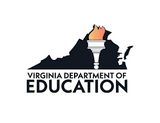
English Instructional Plan – Descriptive Writing for Grades K and 1
- Subject:
- English
- Writing
- Material Type:
- Lesson Plan
- Author:
- VDOE Project Team
- Date Added:
- 04/22/2022

English Instructional Plan – Descriptive Writing for Grades K and 1

This lesson helps students realize the impact of writing with effective description.

Designed for two 90-minute class periods. First students will imagine they are stranded on an island with no way to escape. It has all necessary resources to survive, and they have been tasked with creating their own system of government. Students will work in groups to create a government system, using slides or a poster to display their work.In the next class period, groups will take turns presentig their form of government to the class, and peers will ask them questions about their form of government and discuss if it would last several geerations. Includes Lesson Plan as well as Google Doc/PDF of student handouts and teacher/peer rubrics
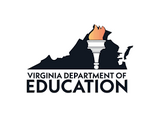
Measuring distance to determine perimeter -- Mathematics Instructional Plans (MIPs) help teachers align instruction with the 2016 Mathematics Standards of Learning (SOL) by providing examples of how the knowledge, skills and processes found in the SOL and curriculum framework can be presented to students in the classroom.

English Instructional Plan – Determining Validity of Sources 6-8
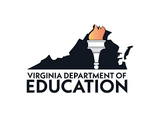
English Instructional Plan-Developing Fluency 6-8
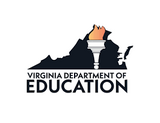
English Instructional Plan-Developing Objective Summaries 6
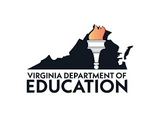
English Instructional Plan Developing Thesis Statements 6-8

Technological advances, breakthroughs in interpretation, and new observations continuously refine our understanding of the Earth and solar system. The invention of the telescope provided powerful and confounding observations that rapidly challenged the Earth-centered model. Students will investigate how technology has impacted innovations in other fields like astronomy and advanced our knowledge of the solar system substantially in the last half century.

In this lesson, students will increase their skills in both life science and computer science as they create their own dichotomous keys. By gathering a collection of items, they will learn how to use compound conditionals and if-statements to construct a dichotomous key that allows their classmates to identify their items accurately. This exercise encourages students to explore the life sciences and helps them develop critical thinking and programming skills necessary in computer science.

The best of the worst,and the most common misconceptions/mistakes the teacher has seen in her students classwork are used as a means of getting the students to de-bug and find where the solution went off track. Meaningful discussions occur and can be really insightful for teacher if no one can spot the issues! This is adaptable to whatever type of computational problems the teacher is teaching at the time
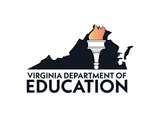
English Instructional Plan-Differentiate Between Formal and Informal Language

This minds-on analysis and discussion activity helps students understand that cell size is limited by the very slow rate of diffusion over any substantial distance and the insufficient surface-area-to-volume ratio for larger cells. In addition, students calculate why these problems do not apply to long slender cells or parts of cells (e.g. the axons of neurons that extend from your spinal cord to your foot). To maximize student participation and learning, I recommend that you have your students complete the questions individually or in pairs and then have a whole class discussion.

The learner will begin a timeline of famous Virginians which will be ongoing using paintings from the Virginia Museum of History and Culture. Students will learn to cite digital images correctly.

Photography, as a nonverbal language, allows students to increase their visual perception and provides a medium for creative expression. The history of photography will be evaluated in the context of historical, social, cultural and artistic developments. Students learn to understand the artistic qualities of the photographic medium while acquiring the techniques for utilizing photography for expressive purposes. Instruction includes studio and field techniques, photojournalism, fashion photography, and commercial, portrait, scientific, nature, wildlife and sports photography. In producing their own works and by studying the photographs of others, students will develop a base for making informed aesthetic judgments. Integrated throughout the course are career preparation standards which include basic academic skills, communication, interpersonal skills, problem solving, workplace safety, and technology and employment literacy.

The teacher will introduce students to the following concept: Digital Safety. Computer networks, including the Internet, can be used to connect people to other people, places, information, and ideas. In order to keep students safe, schools and divisions have rules on the appropriate use of technology. All students should be aware of what is allowed and not allowed when using division/school technology.
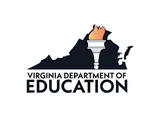
Determining direct variationMathematics Instructional Plans (MIPs) help teachers align instruction with the 2016 Mathematics Standards of Learning (SOL) by providing examples of how the knowledge, skills and processes found in the SOL and curriculum framework can be presented to students in the classroom.

English Instructional Plan Direct and Indirect Characterization 6-8
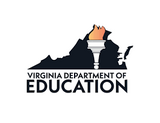
Composing and Decomposing Numbers to 10 Mathematics Instructional Plans (MIPs) help teachers align instruction with the 2016 Mathematics Standards of Learning (SOL) by providing examples of how the knowledge, skills and processes found in the SOL and curriculum framework can be presented to students in the classroom.
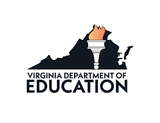
Science Instructional Plans (SIPs) help teachers align instruction with the Science Standards of Learning (SOL) by providing examples of how the content and the scientific and engineering practices found in the SOL and curriculum framework can be presented to students in the classroom.